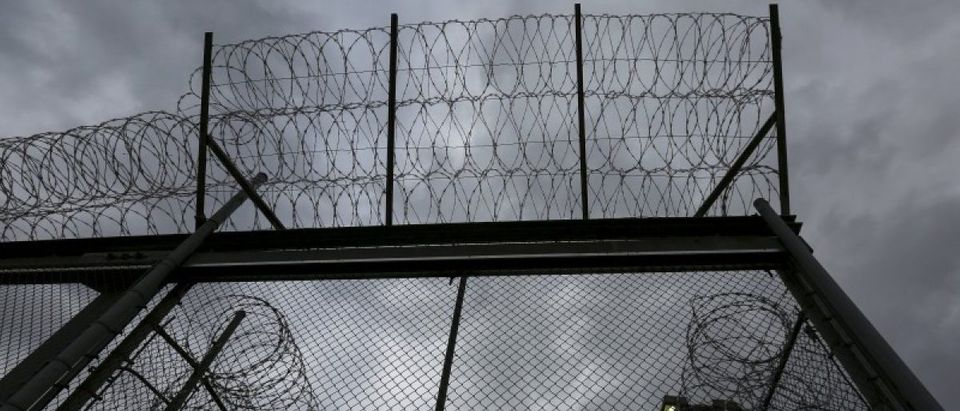Some may think that criminal justice reform and public safety are mutually exclusive concepts.
Those skeptics say that the criminal justice reform efforts in Congress are little more than an attempt to coddle offenders. Others see self-styled social justice warriors screaming the latest catchy slogan while vilifying police and a 24-hour news cycle that can’t turn the cameras away.
But as with most leftist causes, the activists become more supportive of the catchy slogan than of actual change, and it quickly fades. Meanwhile, there is a sustained effort for actual reform that entices many law enforcement leaders for one simple reason: It puts public safety above all else.
Speaking last year at a summit on criminal justice reform, Hennepin County (Minn.) Sheriff Rich Stanek, a Republican, noted that the criminal justice system “has become the default system for dealing with, even warehousing low-level and repeat offenders, chronic problems, and unmet needs.”
Stanek isn’t a small-town sheriff. With more than 1.2 million residents, Hennepin County is one of the largest counties in the United States, and his department, the sheriff estimated, booked more than 40,000 people in jail in 2015.
The safety of his community is, of course, his paramount concern. Still, he understands that policing doesn’t address the root causes of crime. But the reliance on law enforcement to deal with these issues only makes law enforcement’s job more difficult.
“An arrest doesn’t solve the underlying problems,” Stanek explained. “In fact, an arrest creates even more hardship and complexity — court hearings, criminal records, loss of dignity, privacy, amongst others.
“Police resources are often spent responding to and arresting low-level offenders, such as the trespassing, the public nuisance, the loitering and the truancy. Many of these cases are just symptoms of more fundamental issues, like homelessness and mental illness, alcohol, chemical dependency, the list goes on and on and on. Often times, it’s a combination of two or more of these factors,” Stanek explained. “And for those with mental illness, an arrest means being moved into a jail environment, which, oftentimes, only exacerbates the problem.”
The problem, as Stanek and many others in law enforcement see it, is that law enforcement is called on to deal with societal ills. The public has forgotten that the rest of the criminal justice system — from front-end sentencing to prisons to back-end reentry — is failing our brave law enforcement officers and our communities. Unfortunately, law enforcement often takes the blame for these failures. That’s unfair.
That’s also why perhaps some of the biggest benefits of criminal justice reform accrue to public safety while at the same time providing law enforcement with the support it needs “to protect and serve.”
The skepticism from many in law enforcement about criminal justice reform is easy to understand with so many antagonistic voices pushing what often comes off like an anti-law-enforcement message. But we can’t overlook the empirical evidence of conservative criminal justice reform policies advanced in conservative states.
While those on the ideological left fantasize about how their way of the world leads the United States to a mystical path towards some European utopia, conservatives who care about improving the criminal justice system have taken a decidedly different path. And law enforcement is taking notice, because this is a system that makes it safer for their own personnel and for the communities they are sworn to protect.
Conservative states like Georgia, South Carolina and Texas have created a new model for criminal justice reform, one that seeks to address fundamental issues facing communities rather than only warehousing offenders.
Policymakers in these states created drug courts to divert low-level, nonviolent offenders into treatment programs, reformed sentencing policies to ensure that penalties more appropriately fit crimes, implemented rehabilitative programs to reduce recidivism, and lowered barriers to re-entry to offer second chances.
As a result, crime rates have fallen, recidivism has declined and public funds saved by reserving prison beds for violent offenders can be reallocated to substance-abuse and mental-health treatment programs and to vocational counseling.
“Public safety is enhanced, and taxpayer money is saved,” said Georgia state Rep. Rich Golick (R-Smyrna), the sponsor of criminal justice reform legislation signed into law in the Peach State in the spring of 2012.
One key element of conservative reform is that offenders are actually held responsible for their actions. The thing that makes this different than the usual reforms from liberals is that this accountability leads to change in that individual that doesn’t blame society or an illness, but instead faces the reality: I’ve done wrong, and now I need to make good on it.
Most importantly, it allows law enforcement to do its job of protecting our communities against the most dangerous people, not just minor criminals that are now going to be swept up in the web only because some politician thought it made him or her look “tough on crime.”
Conservative criminal justice reform ensures punishments that fit the crime, and it offers help to those who are willing to accept it to change their lives and become honest citizens.
Conservative states have paved the way to bring these reforms to the federal level. The culture of corrections is changing in a way that promotes public safety, and we hope more members of the law enforcement community from across the country will continue to embrace it.
Adam Brandon is the president and CEO of FreedomWorks. Ken Cuccinelli is a Right on Crime signatory and a former attorney general of Virginia.


